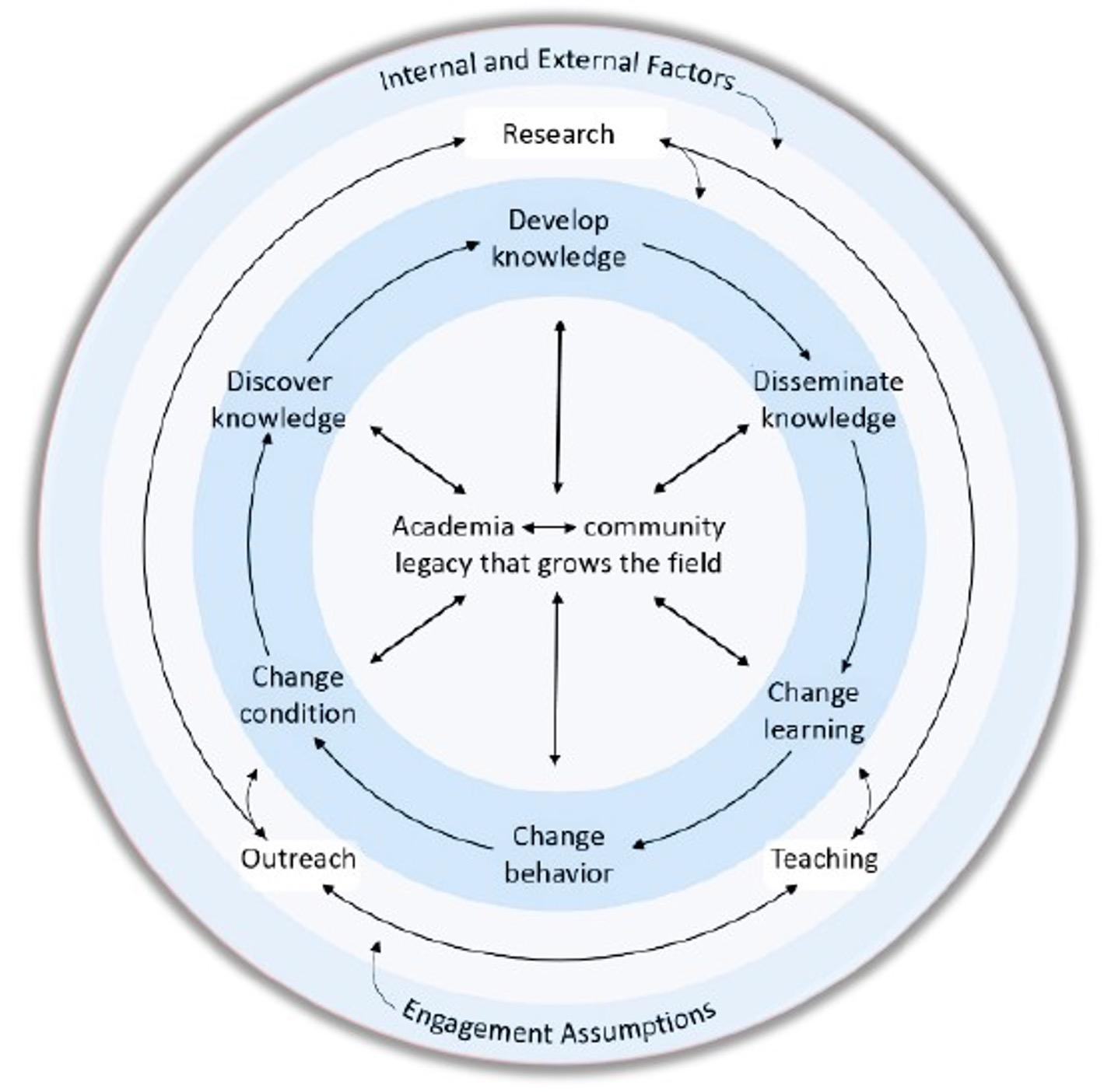The Scholarship of Engagement
The MSU Faculty Handbook serves as the authoritative source for academic tenure and promotion policies and procedures. These guidelines were developed by the MSU Robert Holland Faculty Senate in compliance with the Board of Trustees of State Institutions of Higher Learning's Bylaws and Policies.
While the faculty handbook provides the overarching framework, the institution’s promotion and tenure application and evaluation criteria recognizes and rewards community-engaged scholarship in ways that align with their distinct disciplinary contexts and missions. As a land-grant institution, MSU’s core mission includes community engagement through teaching, research and service.
The promotion and tenure application and evaluation criteria incorporates the Carnegie Foundation for the Advancement of Teaching's definition of community engagement and it is theoretically grounded in Ernest Boyer’s work entitled Scholarship Reconsidered: Priorities of the Professoriate (1995) that identifies four functions:
- The Scholarship of Discovery – to observe and research phenomena to create new knowledge and add to the body of knowledge of a discipline.
- The Scholarship of Integration – to research, synthesize, evaluate and interpret the use of knowledge through an interdisciplinary approach, illuminating the data and focusing on a specialized need/areas.
- The Scholarship of Sharing Knowledge (Teaching) – to improve student learning through innovative instructional design, teaching methods and techniques, conducive learning environments, etc., that answer’s the “so what?” question. This includes non-formal or non-credit teaching. It also requires that the systematic study of teaching and learning and the work be made available to the public.
- The Application of Knowledge – applying research to address noteworthy problems that benefit society.
In addition, MSU’s engagement criteria are also theoretically based on Nancy Franz's Engaged Scholarship Model (2009). Franz's model integrates education, program development, and evaluation to create a comprehensive framework for engaged scholarship in the figure listed below. The grouping of concentric circles illustrates the interrelationship among each component of the model, with the inner circle serving as the foundation for the others. The other elements are all equally important, enabling educators and communities to begin working together at any point in the circle.
Figure 1. Engaged Scholarship Model (Franz, 2009)

(courtesy of Nancy Franz, modified 2009)
Recognizing and rewarding faculty and staff for community-engagement is recognized through promotion criteria because engagement is a part of teaching, research and service. The implementation of Boyer’s four functions and the Franz model has influenced how the university evaluates faculty contributions across all units, leading to increased recognition and support for community-engaged scholarship throughout MSU. This institutional evolution reflects a deepening commitment to meaningful community engagement as a valued form of scholarly work.